Stuck trying to figure out how to choose the right influencers?
No problem. I will guide you in pinpointing genuine influencers who genuinely connect and resonate with their audience.
Thinking of collaborations on platforms like YouTube, blogs, Twitter, or Instagram? You’re in the right spot with this guide.
But first, I have to share this with you…
A client shared with me a significant $50,000 investment in influencer marketing that yielded no tangible results. No increase in traffic, sales, or brand awareness.
Upon exploring further, she revealed that the influencers, suggested by an agency, weren’t the right fit.
After a brief assessment, I had to agree.
And this isn’t an isolated incident.
An Econsultancy survey highlighted a challenge: 73% of marketers find it tough to select the right influencers.
At the core of this challenge? The influencer choice. If not chosen judiciously, campaigns can underperform, affecting your marketing ROI.
One prevalent misstep? Choosing influencers based solely on their follower numbers.
So, how can you make informed decisions and select the best influencers that truly resonate with your brand?
Join me as I unpack insights and strategies from my experience in the field.
Let’s dive in!
What’s Influencer Marketing and Is It Effective?
Let’s break it down:
Influencer marketing is about partnering with key figures who already engage with the demographic you’re aiming for.
These individuals wield considerable influence over their audience because they are trusted by their followers.
The strategy?
Determine who your target market respects and listens to, then shape your marketing efforts around these influencers.
Different from the often disruptive nature of traditional advertising, influencer marketing leans into a more subtle approach: it’s about suggestion and persuasion.
However, the true litmus test is its efficacy.
This method’s booming popularity speaks volumes about its impact. Let’s put some numbers to it:
- 60% of consumers turn to blogs and social media on their mobiles before making a purchase.
- 77% of consumers rely on online reviews prior to buying. (source)
- Impressively, 85% of consumers view online reviews with the same trust as personal recommendations. (source)
Understanding this, it’s no wonder that from startups to established giants, businesses everywhere are harnessing the power of influencer marketing.
Who is Considered an Influencer?
There are ten primary categories of influencers who consistently generate content online:
- Celebrities
- Journalists
- Authors
- Bloggers and blog editors
- Podcasters
- Social media mavens (covering platforms like YouTube, Twitter, Instagram, TikTok, Facebook, Pinterest)
- Event curators
- Academic scholars
- Market analysts
- Professionals (including doctors, nurses, lawyers, judges)
Content is typically classified into two primary formats: short-form and long-form.
Short-form content dominates social media platforms. Its transient nature means that its relevance may only last for a brief window—sometimes as short as mere minutes.
It’s dynamic, fleeting, and highly engaging.
On the other hand, long-form content is more substantial, often found on blogs, podcasts and video channels.
Its impact is enduring and therefore searchable for months, even years.
For example:
There are blog posts still available online from influencer events I ran over 10 years ago! The point is, that long-form content is searchable for years after it’s published – which is great for demand gen.
Also, each mention or backlink from an influencer’s platform can enhance your site’s authority, offering you the added advantage of SEO benefits.
Take Tim Ferriss of the “4 Hour Work Week” as an example. He’s a proponent of long-form content, emphasizing its longevity—content that can be discovered and valued for years.
Many businesses, including notable names like HP, have adopted this approach and continue to reap its rewards.
How to Start Your Influencer Journey
Let’s set the record straight: selecting influencers purely based on their social media stats is a misstep.
What you need to prioritize are the qualities that resonate with your business ethos and brand identity.
So, what’s my strategy?
I opt for influencers who are in sync and pertinent to my message.
This approach ensures that my campaigns yield tangible business outcomes.
For instance, let’s delve into the performance of one of my campaigns, specifically focusing on product sales:
I haven’t changed how I find and select influencers since 2008 aside from incorporating more tools.
And I’ll talk about a number of those here.
About the only thing I do differently is I use better CTAs and a UTM to track conversions when it makes sense:
Have a clear CTA and use UTM codes to track traffic and conversions on your landing pages.
So, if you follow my advice and look for influencers based on congruence and relevance, your campaigns will perform better.
How Can You Identify the Right Influencers?
While many have their unique ways of scouting influencers, I’ll share methods that have consistently delivered results for me:
Begin at Home. If you’re an established brand with a following, analyze your social media and blog interactions. Who’s commenting? Who’s sharing? Among these active participants, you might stumble upon potential influencers. An influencer already engaging with your content likely understands your target audience and has a favorable impression of your brand, reducing the effort required to bring them on board. Tools like Mention can be handy in identifying such influencers within your circle.
(For brands just starting out, it’s okay to skip this and jump to the next method.)
Harness the Power of Google. Utilize lists already curated by others. Searching for “Top Fashion Bloggers” or “Leading SEO Experts” can yield valuable lists of influencers, tailored to your niche, and it doesn’t cost a dime.
Employ Hashtag Research. This method involves probing relevant hashtags on social platforms and deploying online tools to zero in on prominent voices in your field.
Explore Influencer Platforms—But Tread Carefully. These platforms can streamline your influencer search. However, a word of caution: many platforms don’t meticulously screen influencers for authenticity. It’s on you to scrutinize for potential fake followers or inauthentic engagement.
Dive into YouTube. A treasure trove for video content creators, YouTube offers a myriad of potential influencers to collaborate with.
Leverage Referrals. As you begin to build relationships with influencers, seek their recommendations. Tapping into their network can be a goldmine for discovering other genuine influencers.
Remember, it’s all about quality over quantity.
The right influencer can amplify your message in ways that resonate authentically with your target audience.
Discover the Right Influencers Using Google: A Walkthrough
Imagine you’re on the hunt for influencers in the realm of SEO.
Here’s a simple step-by-step:
- Head over to Google.
- Type phrases like “Top SEO Influencers” or “Leading SEO Experts” into the search bar.
- Browse the results, sifting through the various lists that appear.
- Identify potential influencers who resonate with your brand.
Just like that, within moments, you’ve got a list.
One of Google’s advantages is its expansive reach and vast database.
The beauty of this method?
Others have curated these lists for you, saving you the initial groundwork.
Now, you might think, “SEO is mainstream. But what if I’m in a niche market?”
The beauty of Google? It’s versatile.
For instance, if you’re in the funeral industry and wish to pinpoint influencers specific to your domain, just type “funeral industry bloggers” into the search bar.
Here’s what comes up:
The takeaway?
If Google can provide insights into such a niche area, it’s equipped to handle just about any field, including the funeral industry.
And, in searching up content like this, you not only pinpoint influencers but also those who curate in-depth, long-form content.
Those might be worth looking at too.
Harness Hashtags to Find Influencers on X (Twitter)
X (Twitter) thrives as a hotspot for pinpointing influencers quickly through hashtags.
Why? Many industry thought leaders and content creators are on Twitter, using it as their soapbox for content, making it an intuitive hub for your influencer search.
Imagine you’re scouting for voices in hypertension and high blood pressure domain. Here’s your actionable guide:
- Open X (Twitter).
- Zone in on the search bar perched atop.
- Plug in targeted hashtags, say, #hypertension.
- A mosaic of potential influencers and brands will unfurl. Navigate through to isolate promising profiles.
And so, yes, hashtags are a fast route to locating influencers.
Yet, you should know there is a quirk: X’s search results lack an arrangement feature.
Pro Insight: The savvier marketers often pivot to Followerwonk.
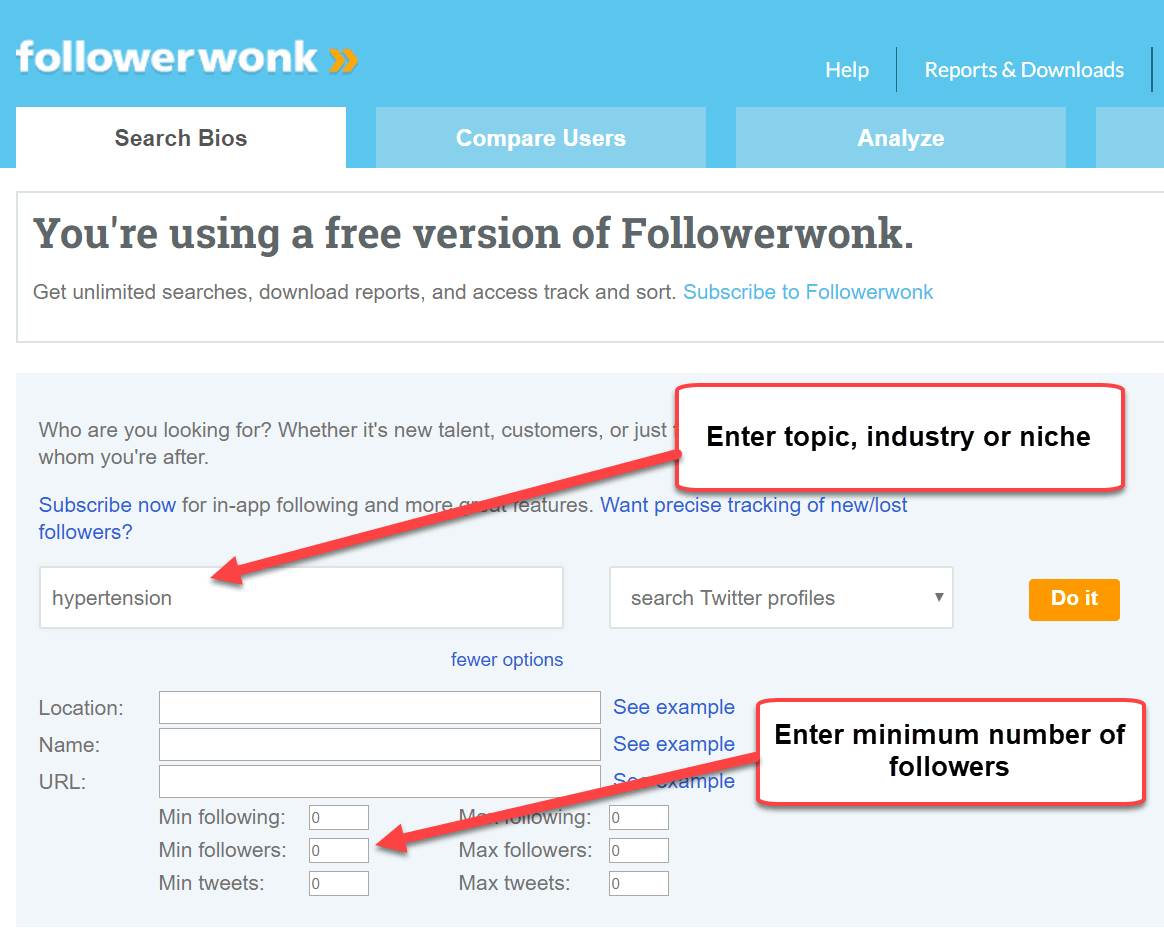
Here’s what you do:
- Go to Followerwonk and select ‘Search Bios’.
- Engage “more options” for a deeper scan.
- Key in your niche. Drill down for precision. Instead of a broad search using a term like “health”, I’ve punched in “blood pressure” for more focus. (Extra Pointer: Tag on “+ Blogger” for more results).
- Set a follower threshold, perhaps starting at 100,000 for mainstream sectors. But if nano-influencers are your game, even a mere 1,000 can be a kickoff.
An array of profiles, ranked by follower volume, awaits.
A word of caution:
Sheer follower volume isn’t the influencer yardstick.
In the world of ‘follower inflation,’ discernment is vital.
Many influencers, unfortunately, resort to buying followers.
Also, owing to pesky algorithms, much of an influencer’s content may elude the bulk of their followers.
Zoom into the ‘Social Authority’ column:
It’s a metric cocktail of follower count, tweet volume, and follower potency.
A low authority?
It’s an influencer less equipped to galvanize their audience so depending on your objective, you might want to keep looking.
So, the ‘Social Authority’ metric isn’t the holy grail.
Scrutinize potential profiles:
- Consistent content postings?
- Quality caliber of content?
- Multichannel content distribution?
- Level of follower engagement?
Spot any Twitter lists they’ve curated, as influencers often have fellow influencers on their radar.
I’ve struck gold with such lists.
Once you’ve earmarked your prospects, catalog them.
Bonus: Followerwonk lets you usher these names into an Excel sheet. Neat, right?
Switching gears to Instagram:
- Open Instagram.
- Spot the search bar aloft.
- Slot in your hashtag (for instance, #hypertension).
- A bunch of profiles emerge. Scan through for the standouts.
Locating influencers on Instagram? It’s simple.
However, like Twitter, Instagram’s search can be cumbersome so consider leveraging the below influencer platform to make it easier.
Find the Right Influencers Via Influencer Platforms Like Scrunch
Scrunch stands out as an intuitive influencer discovery platform.
Here’s how to use it, step-by-step:
- Access Scrunch and direct your attention to the search tab located at the top-left corner.
- Input your targeted hashtag, such as #hypertension.
- Upon searching, a roster of potential influencers will emerge.
- Browse to identify influential profiles.
You will quickly access a lot of data at your fingertips.
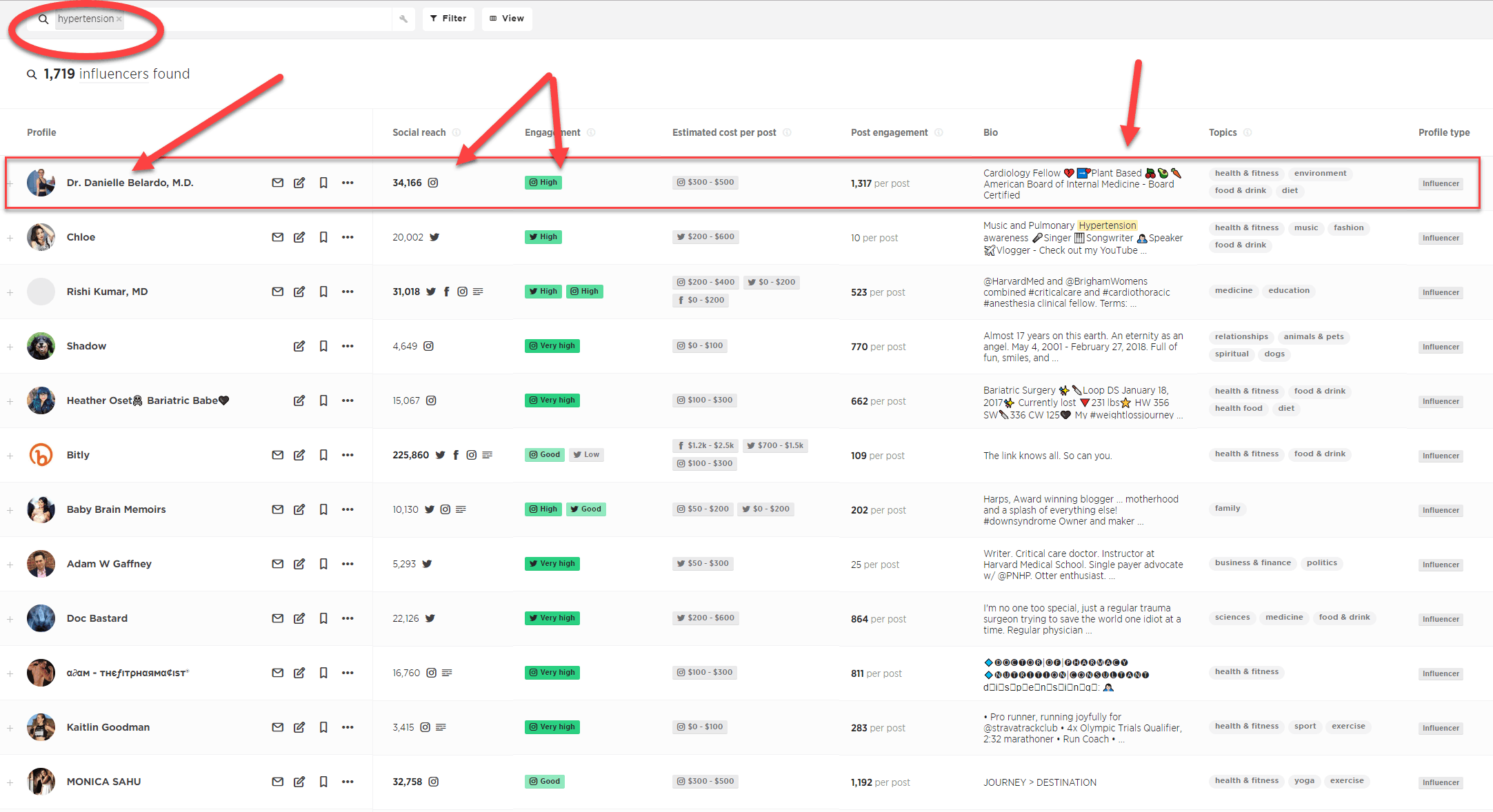
It unveils pertinent insights, from their social media presence across platforms like Instagram, Twitter, YouTube, Facebook, and others.
Of paramount importance are the engagement statistics so pay special attention to these; they spotlight the vibrancy of the influencer’s follower community.
In general, the Golden Rule is that higher engagement is invariably preferable.
In tandem, Scrunch also avails metrics like audience size, profile synopsis, and a ballpark figure for post costs.
Remember, there’s always room for negotiation. Rarely are these cost estimates set in stone.
Yet, it’s imperative to delve deeper when you can, especially concerning Instagram engagement metrics – a pivotal yardstick in influencer selection.
For this, a tool like Phlanx’s Influencer Engagement Calculator comes in handy.
How to utilize it:
- Navigate to Phlanx.
- Opt for the “Engagement Calculator” on the home page.
- Input the Instagram username.
- Hit search.
- Decipher the metrics that follow.
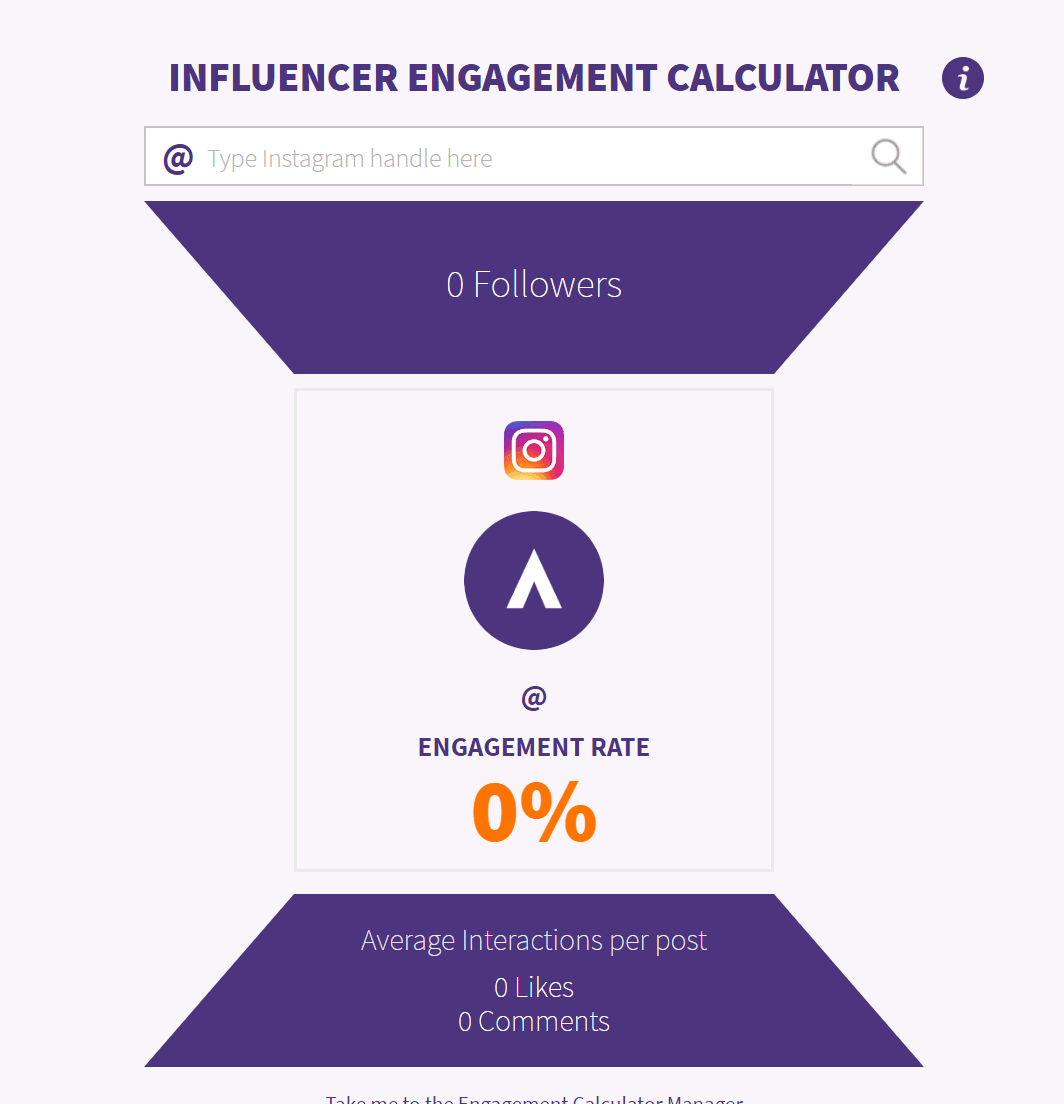
Your objective here is to look beyond mere follower count; it’s about fostering genuine engagement so focus on that.
So, what constitutes good engagement?
Counterintuitively, larger audiences generally render less engagement, thanks to algorithmic intricacies and human psychology.
The result is that engagement rate is inversely related to social following size.
The larger the social following, the less engagement rate. Conversely, the smaller the social following size, the greater the engagement rate.
(This is why some influence marketers focus on micro-influencers and nano-influencers).
To streamline your assessment, consider these industry-established benchmarks:
- Below 1%: Tepid engagement rate.
- 1% to 3.5%: Standard to admirable engagement.
- 3.5% to 6%: Robust engagement.
- Above 6%: Stellar, top-tier engagement.
How to Find Video Influencers (Vloggers)
Consider this scenario from the point of view of one of my healthcare clients…
The client offers a health supplement promoting optimal blood pressure levels.
Recognizing the appeal of videos, especially for intricate topics like high blood pressure, we sought out influencers who could produce videos to inform and educate the target buyers.
Also, the videos would boost brand recognition and increase traffic to the client’s landing page.
So if video influencers are your focus, YouTube is your natural starting point.
Start your search with a search term.
We could use “hypertension” – and that will get some results.
But to expand our results, a more colloquial term like “blood pressure” might yield more results as it is a broader term and likely more widely used by people searching YouTube.
Here are the steps to follow:
- Navigate to YouTube.
- Insert your desired keyword or phrase into the search bar.
- Explore the profiles and content of potential influencers.
- Shortlist those who align with your requirements.
Discovering video influencers on YouTube is a breeze. It is the second-largest search engine around, by the way.
If you’re looking to refine your search further, platforms like BrandConect can be invaluable, especially when scouting for YouTube content creators.
Here’s how to use it:
- Go to BrandConnect.
- Select Start Now button on the upper right portion of the page.
(Note: You will have to have a Google Ads account) - Dive into the influencer listings.
- Handpick those who match your criteria.
In essence, BrandConnect simplifies the hunt for YouTube content creators.
Picking Top-Notch Influencers? Here’s My Go-To Method.
I’ve nailed this method down for my Fortune 500 clients.
But here’s the kicker: it works wonders for growth companies and small businesses too. Whatever your niche or size, this system works.
And just to make it clear: I’m showing you the ropes as if I’m starting with zilch.
No premade lists, no previous contacts.
Total ground zero.
Let’s dive in!
Step One: Set Clear Goals
Throwing an epic party?
You don’t just wing it.
You plan – snacks, tunes, clean floors, and all.
You don’t just invite anyone; you pick folks who’ll vibe well together.
The same goes for picking influencers.
So, before diving in, get clear about what you’re after.
Think:
- More website visits?
- Boosted brand awareness?
- Product reviews?
- Fresh leads?
- Increased sales?
Know your goals upfront. Trust me, it’ll supercharge your ROI.
Step Two: Nail the “Fit”
This step is critical and can sink your campaign if not done right.
Nailing the “fit” means you’ve found an influencer who jives perfectly with your brand.
It’s not just about follower count – it’s about genuine alignment.
Here’s your checklist to find the perfect fit:
Congruence Check: Does the influencer talk about stuff directly related to your brand? If you’re all about a health supplement, are they into health too? More specifically, do they delve into topics directly linked to your product?
Example: If you are marketing a blood pressure supplement, does the influencer produce content about that topic? Just because they do content about health doesn’t mean they are a good fit!
Audience Match: Who are their followers? Age, gender, interests – you want their audience to be your ideal customers.
Authenticity Meter: Are they genuinely passionate about their topics? Gauge this from their content quality and follower engagement.
Sponsored Content Vibe: How do they plug products? It shouldn’t feel like a hard sell. Peek at how they weave sponsored content into their narrative.
Consistency Gauge: Good influencers keep a rhythm. Consistent posts = consistently engaged followers.
Content Quality Check: Read their blogs, and watch their videos. Is their content up to your standards? Imagine them representing your brand.
Engagement Level: Are their followers active? Likes, comments, shares, and genuine interactions are your indicators.
Remember: Fit > ROI. Aligning with the right influencer can skyrocket your success.
Step Three: Dive Deep into Influencer Content
We’re still on the hunt for influencers who are a good fit for our heart-healthy supplement product.
Our target audience age?
For this topic, it’s between 35-65 years -which is pretty broad.
Given our health focus, I’m hunting for credible voices: doctors, nurses, nutrition experts, and such. I’ll start with experts and then branch out to everyday folks who deal with heart issues.
My goals? Simple:
- Boost awareness for the new high blood pressure supplement. Ideally, I want influencers who produce rich, informative content that drives ideal buyers to my client’s site while ramping up brand awareness and amps up the SEO.
- Send traffic and leads to his landing page. Reviews and buzz from influencers will get folks curious, clicking and perhaps buying.
To start, I’m off to BrandConnect to find video influencers.
A quick look shows the most-hired ones cater to younger people, not the crowd we’re looking for.
I spy a popular content creator, but whoa, his stuff is all about… pimple popping?
No thanks, I’ll Pass. 😉
Checking back to YouTube, I type in “blood pressure” and spot a potential gem: Dr. Bergman.
The doc’s video is solid gold: informative, high-quality, and has got quite the viewer count.
What’s better?
The comments:
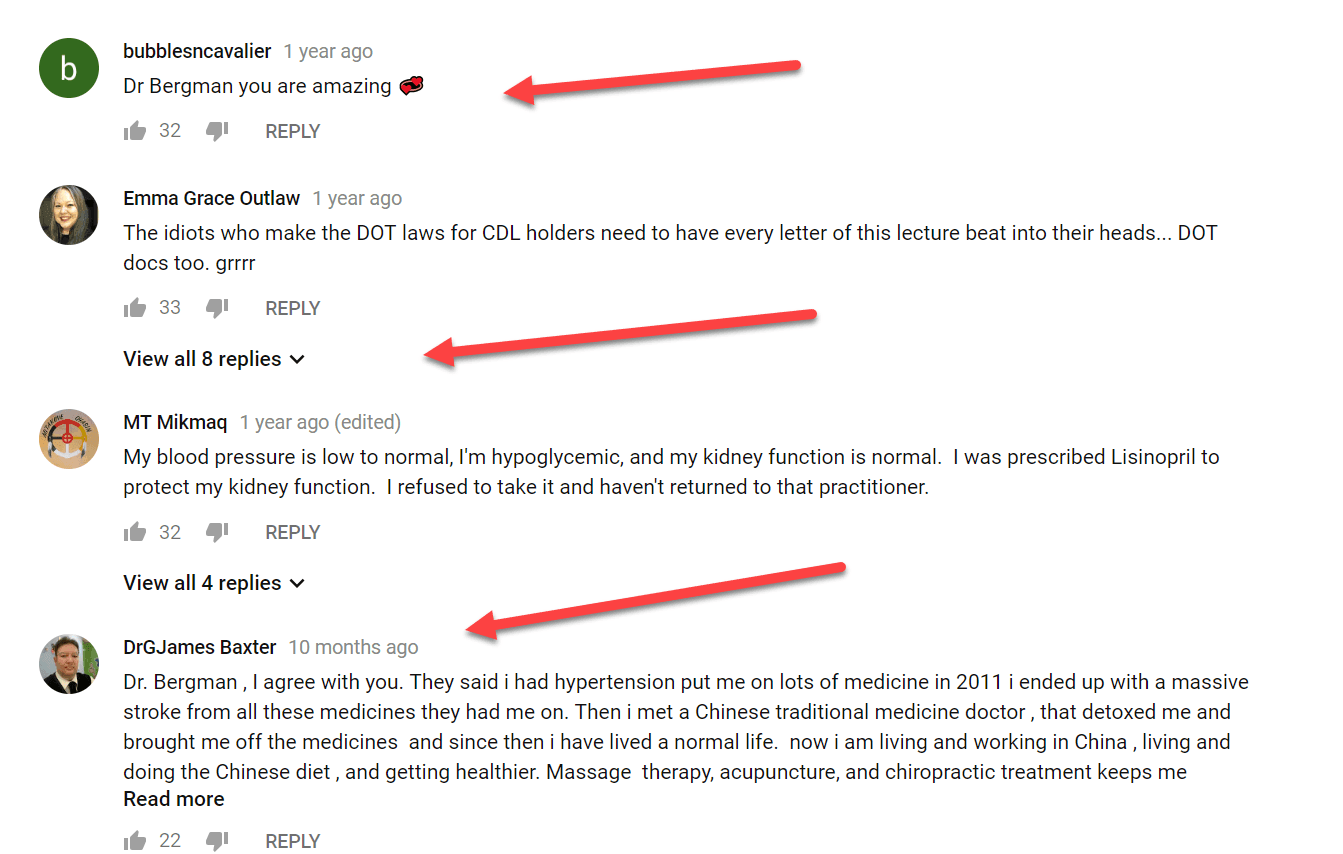 Be sure to check the comments to gauge how people respond to the influencer’s content.
Be sure to check the comments to gauge how people respond to the influencer’s content.Plenty of questions and observations by viewers – his content’s clearly a hit.
Plus, with 432,000 subscribers, this doc’s no small fry.
But remember:
It’s about fit, not just fan count.
Diving deeper into his channel, it’s a goldmine of health topics.
His ‘About’ section confirms my hunch: high blood pressure is a key topic of his.
And look at that, he’s into archery and sailing – my kind of guy!
Heading to his site, I get more background info that might be handy for building rapport later.
A sweep through his socials gives mixed results:
- Twitter’s active, but he’s pinned an old tweet (might give him a nudge about that if I decide to reach out).
- Pinterest? Not much happening there.
- Facebook’s buzzing with 73k followers.
- Instagram’s there, but it’s low-key and not the emphasis now.
Remember, it’s not just about numbers. It’s about relevance and resonance. Dive deep, find the right fit, and you’re golden.
Step Four: Check for Fake Followers
Fake followers are a big problem.
Some influencers buy them to pump up their audience numbers to attract brands into doing business with them.
Because it’s so common, you must check every influencer.
So here are the tools I use to check for fake followers.
For Twitter use Twitter Audit.
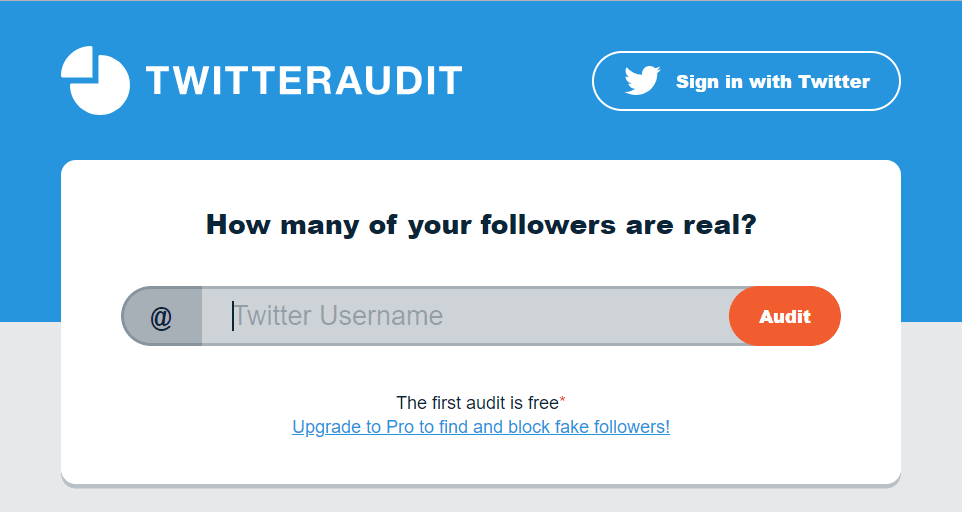
Here’s how you use it:
- Go to Twitter Audit
- Enter the Twitter handle into the search bar
- Hit the “Audit” button
- Review the findings
- Check for fake followers
For Instagram, use Phlanx.
Here’s how to use it:
- Log into Phlanx
- Choose “Influencer Audit” at the top
- Enter the Instagram handle
- Push the Generate Report button
Once you log in, here’s what the Phlanx page looks like:
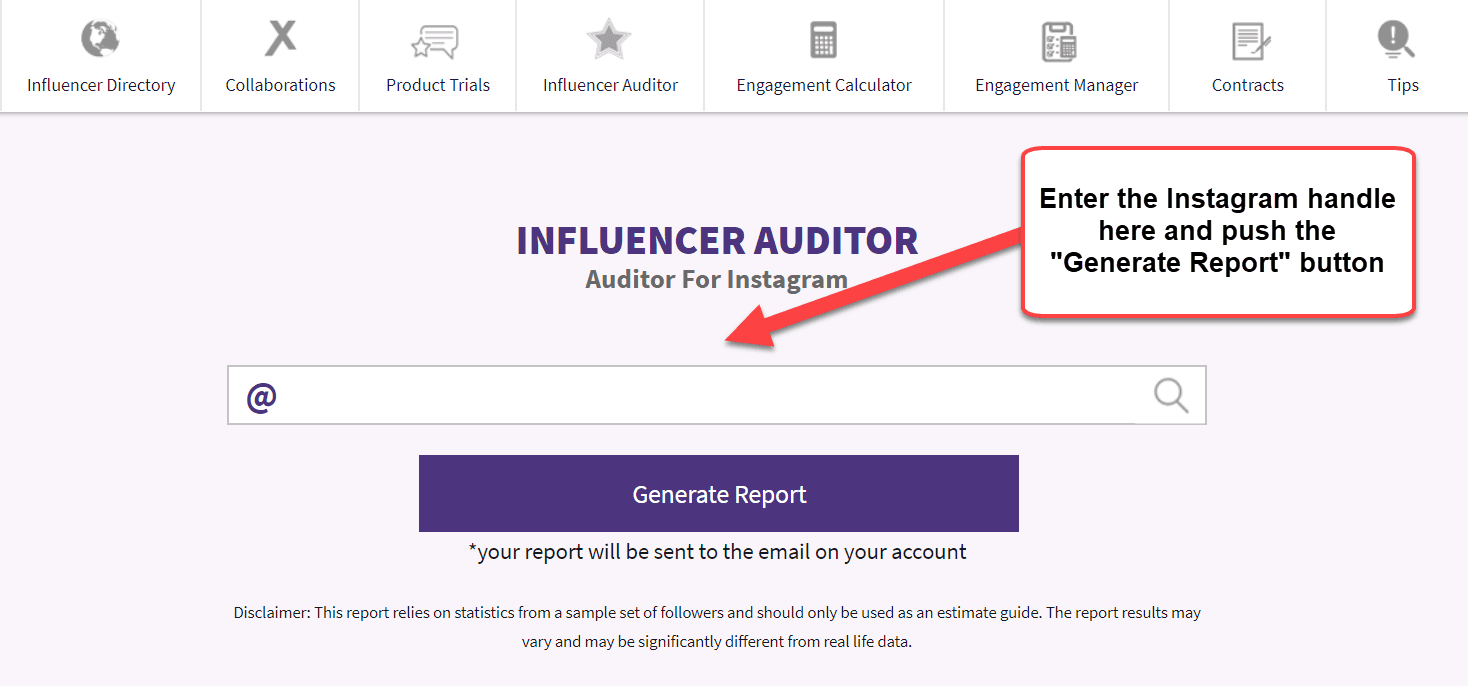
Audit the Instagrammer
Once you click on “Influence Auditor”… just enter the Instagram handle you want to check and press search:
Be sure to check your email as they will send a report to you by email.
Another tool I use to check Instagram accounts is Socialblade.
Here’s how you do it:
- Got to Socialblade.com
- Choose the social platform you want to check at the top (you have a bunch of choices)
- Enter the channel or feed name
- Push the Search button
- Check for fake followers and suspicious activity with Socialblade
For Instagram accounts, scroll down the page until you find a graph.
If you see activity like this, it’s a sign the account is buying followers:

Socialblade helps you find suspicious activity on Instagram accounts
Use Socialblade to find fake followers on YouTube too.
Look for steady growth over time.
Now, just know that some movement up or down is normal but sharp spikes as you can see in the image above are suspicious and a good indication fake followers are being bought.
One of the problems with buying fake followers is that they will sometimes drop off suddenly (as in the chart above).
Is He a Quality Influencer for Me?
After looking closely at Dr. Bergman’s content on his social channels, I can tell he’s an influencer I’d like to work with.
- He reaches my target market.
- The content is relevant and congruent with my product.
- Audience engagement is good.
- His content is high-quality.
Following this method, just repeat the process and you’ll find and choose high-quality influencers every time.
As the saying goes, “Practice makes perfect.” So as you get more comfortable, this process becomes second nature so you won’t even think about it.
Here’s the Next Step
Now I want to turn it over to you:
Which influencers are you going to find and choose first?
Are you going to start working with Instagram influencers first?
Or maybe you want to identify some YouTube content creators.
Either way, let me know by leaving a comment below right now.


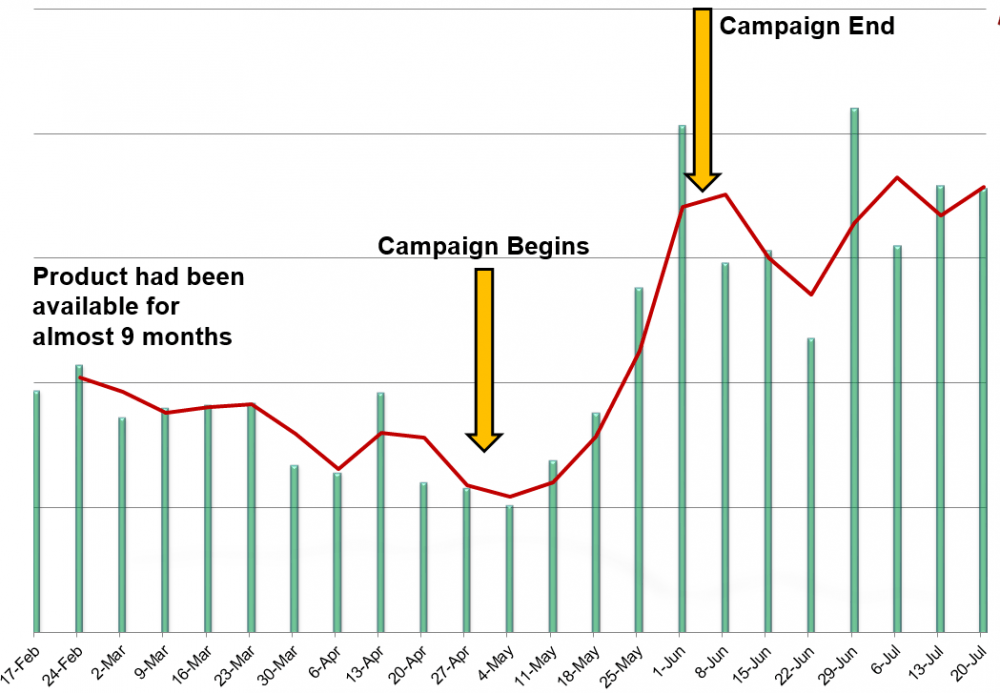
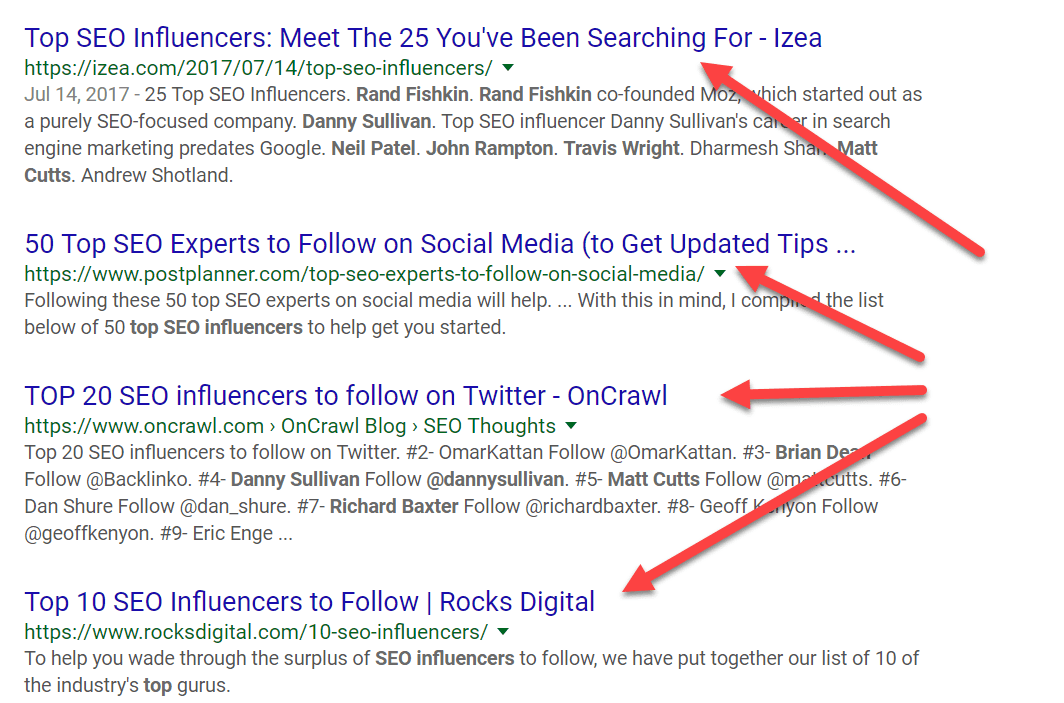
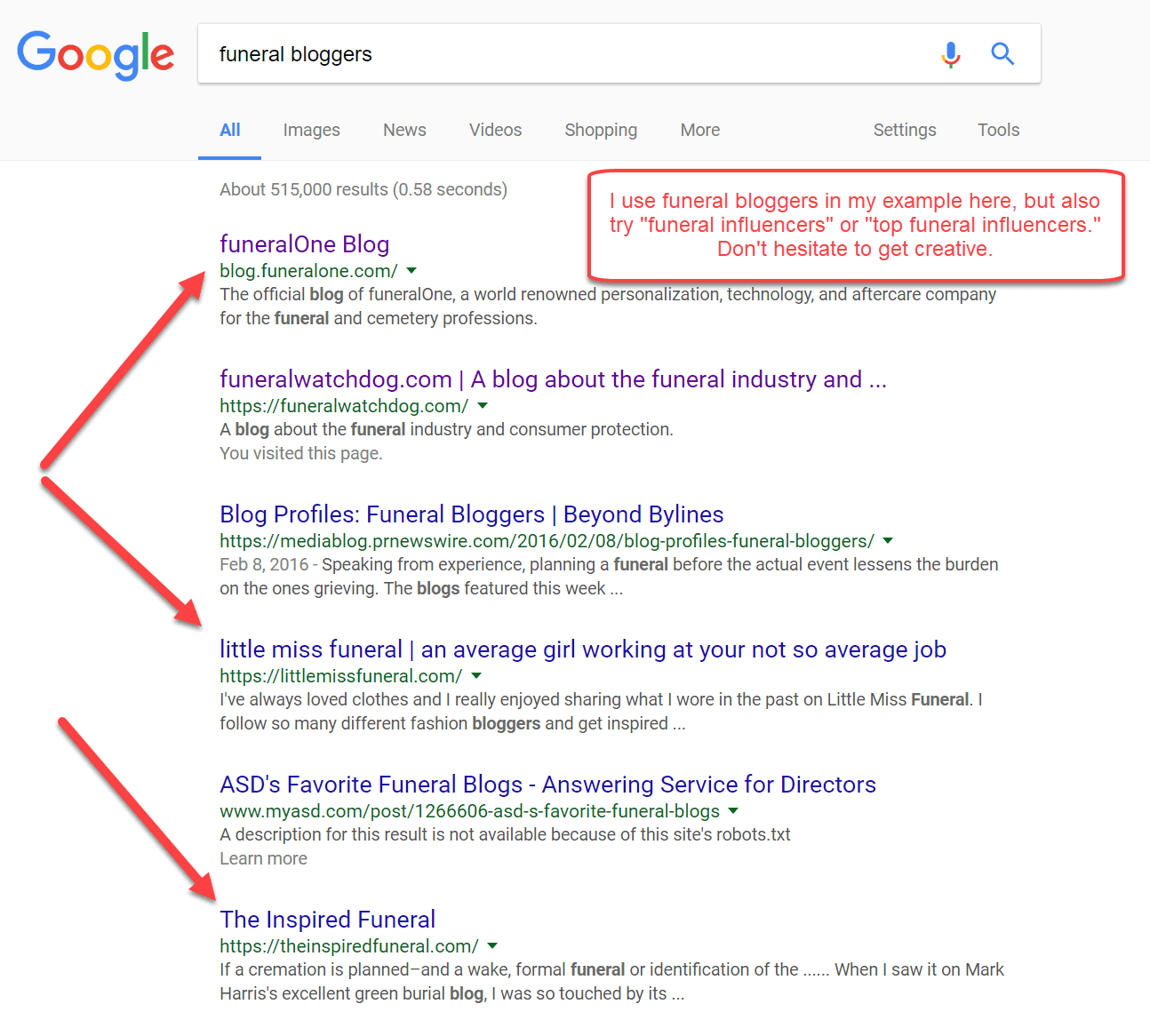
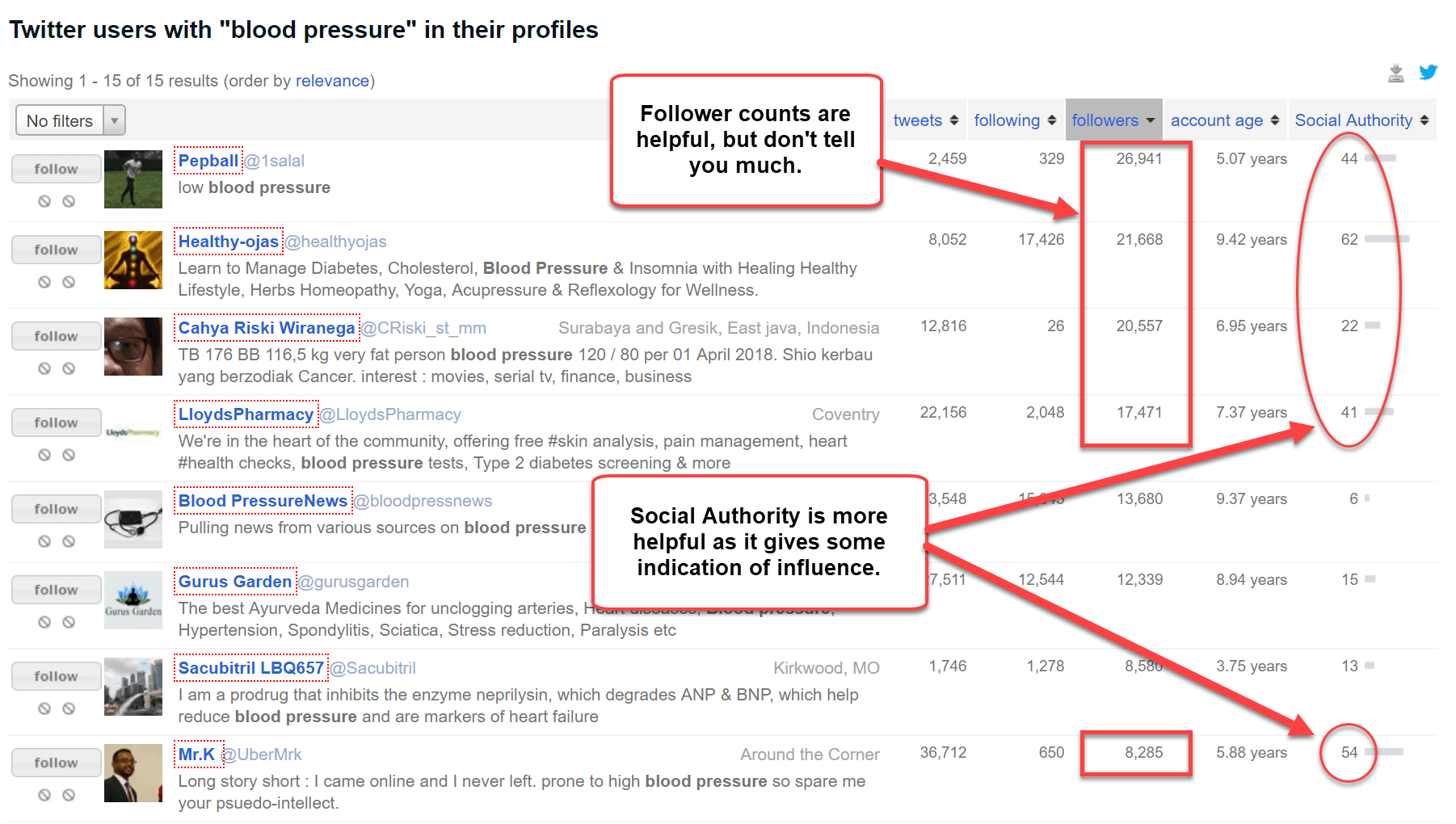
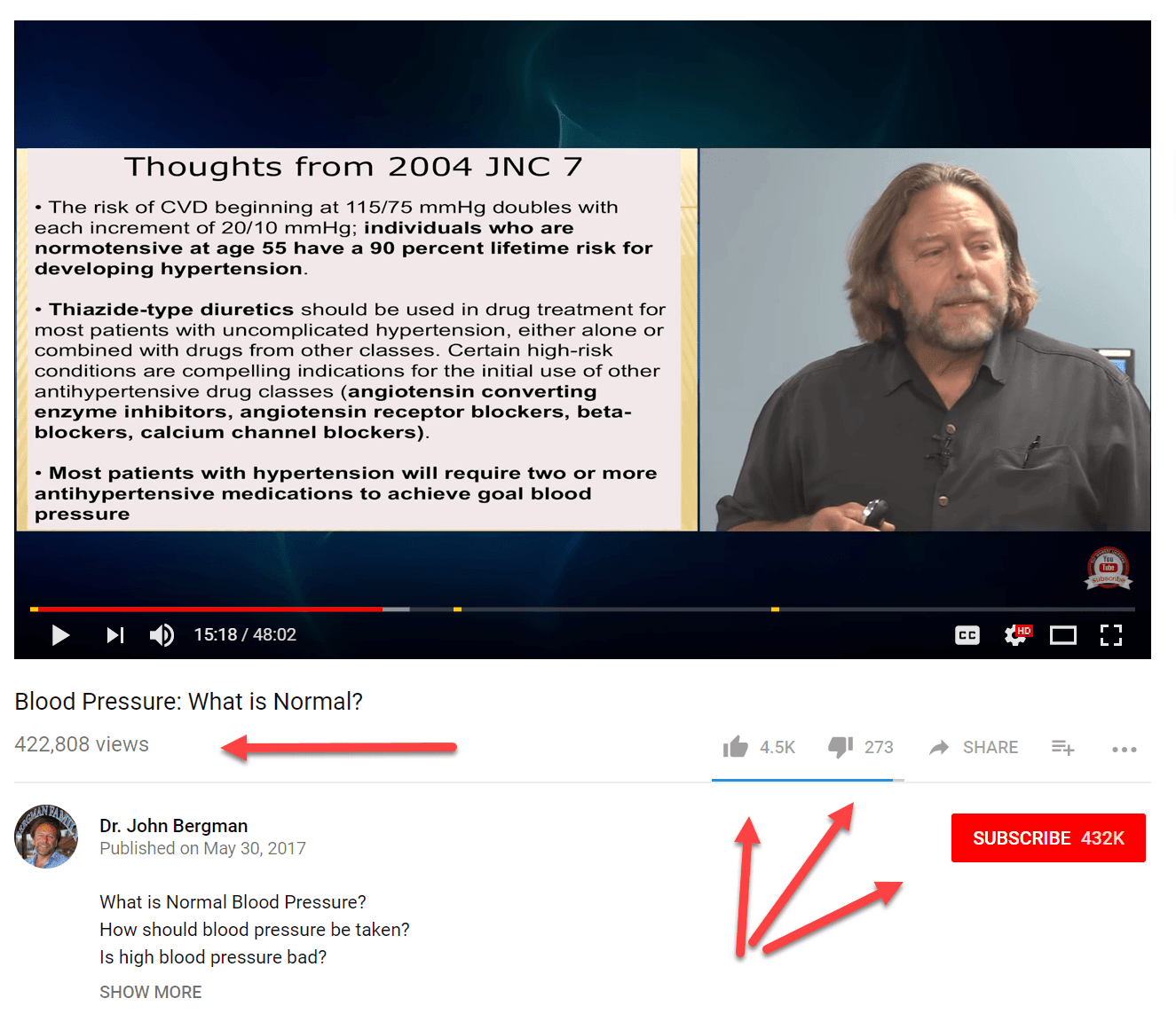
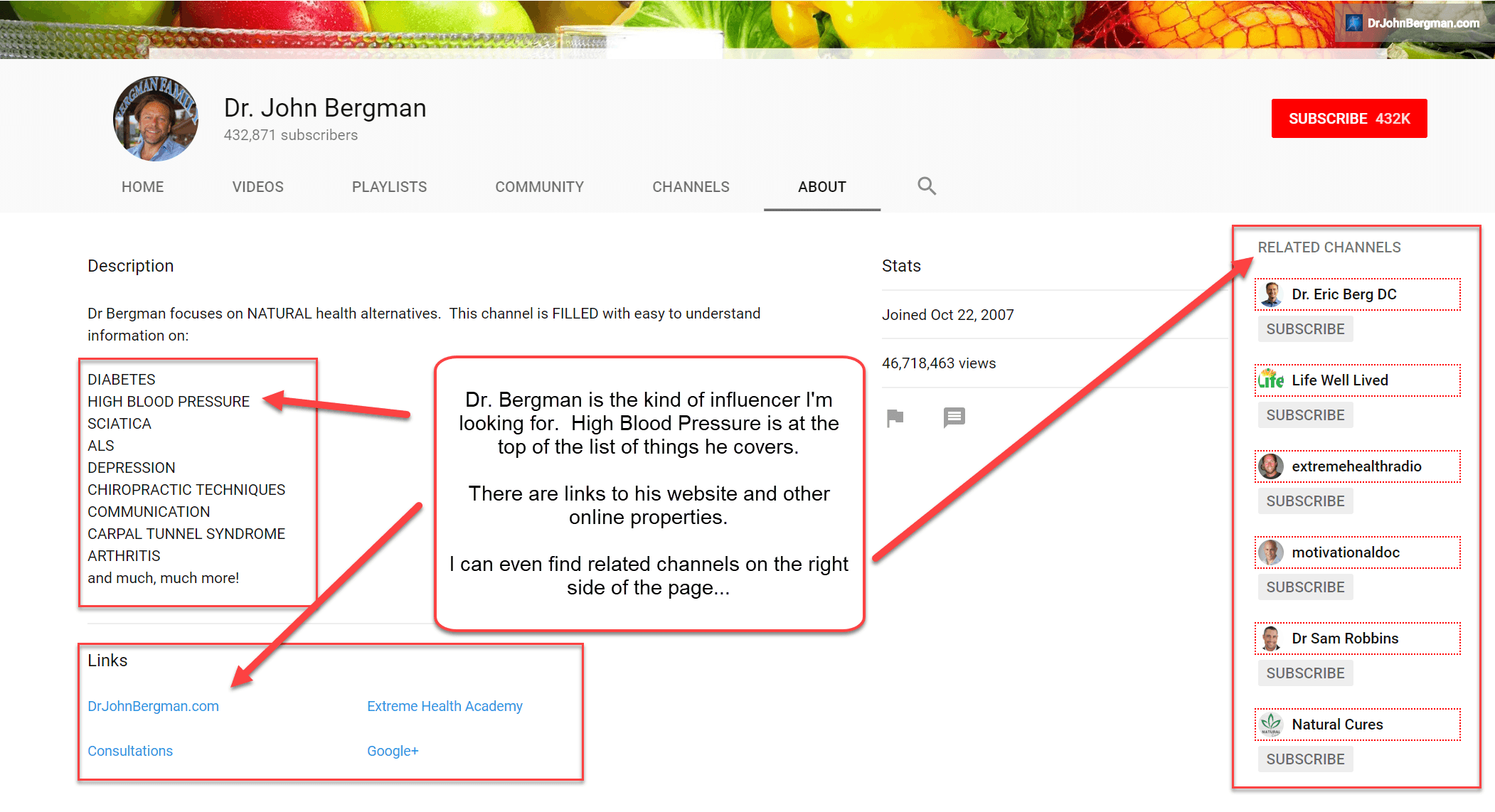
Pingback: Why and How Onalytica is a Premier Tool for Influencer Marketing - // 551 Media LLC
Pingback: 7 Influencer Marketing Mistakes To Avoid - // 551 Media LLC
WOW!!! One of the best articles about how to choose an Instagram Influencer. I will follow all of these rules whenever I need to choose an Influencer. Thank you so much for sharing it with us.
Thank you. We’re happy this article helps you.
Tom. thats really useful as our company just start the influencer marketing. very benefit for our further planning. even we starting try some influencer platform like upinfluence…but all you said I think will be good for us to know the real one we are looking for. thanks again.
Glad it helped!
WOW! Tom, As passionate as I am with anything influencer related, reading your article has just put a smile on my face because it is so well thought of, you know what you’re talking about, you have provided us with insightful information together with examples. I have saved the article just so I can read it again and again. I am definitely sharing this with my team. Thank you so very much.
Thank you, Neli! Its the method I use for all of my clients and for myself as well.